The Love Songs Of The Japanese Rhinoceros Beetle
6:52 minutes
The male Japanese rhinoceros beetle lives a life of insect warfare. These large beetles sport elaborate horns that they use in a type of mating ritual joust, defending territories from other males in the hopes of attracting female beetles. But biologist Jillian del Sol noticed that this beetle love fest includes another component—squeaky songs. del Sol, featured in our latest video of The Macroscope series, tells us how males court their potential mates by serenading them and what this tells us about sexual selection among the rhino beetles.
Watch these male rhino beetles duel for mates below:
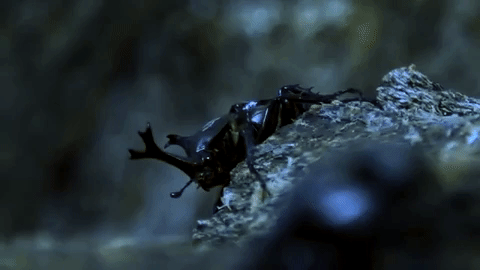
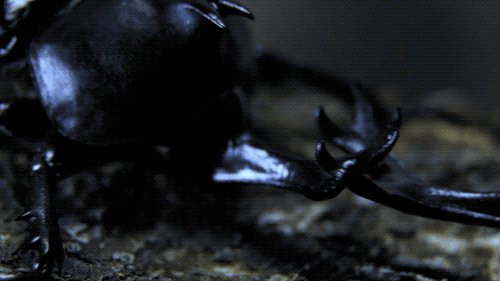
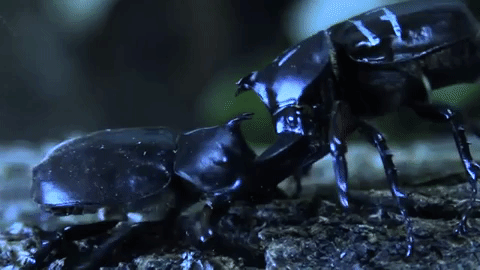
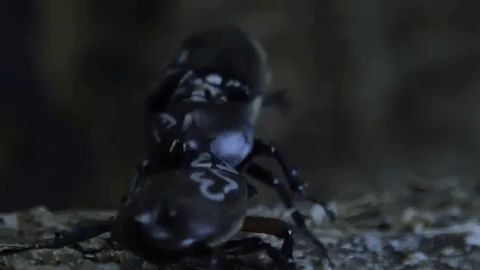
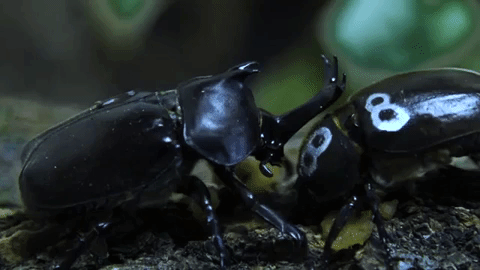
Jillian del Sol is a Ph.D. student in the Department of Biological Sciences at the University of Montana in Missoula, Montana.
IRA FLATOW: What’s your favorite Beatles song? “I Want to Hold Your Hand,” “In My Life”? Around Science Friday, this is our favorite.
[SQUEAKING]
No, it’s not a squeaky shoe and it’s not the Fab Four. We’re talking about the fabulous horned Japanese rhinoceros beetle. That’s what you heard in that clip. And these beetles have a very interesting courtship ritual.
That’s the topic of our latest macroscope video. And you can watch it on our website at sciencefriday.com. And here to tell us about that is Jillian del Sol. She is a biology PhD student at the University of Montana in Missoula. Welcome to Science Friday.
JILLIAN DEL SOL: Hi. Thank you for having me.
IRA FLATOW: These aren’t your typical beetles, are they? They’re the size of an egg, and they have horns.
JILLIAN DEL SOL: Yeah, they have big horns.
IRA FLATOW: What do the horns look like?
JILLIAN DEL SOL: The horns look like these kind of thick pitchfork-shaped structures. They have two main prongs. And then those are also forked. So they have these four sharp points on the end.
IRA FLATOW: And you have collected these beetles in the field. Where do you find them?
JILLIAN DEL SOL: You find you can find them all over Asia. They’re most famous in Japan. But my study sites were in Taiwan and in a few places in Japan, including the small island of Yakushima.
IRA FLATOW: So these are not the Asian longhorn beetles that ravaged the woods of America. These are different.
JILLIAN DEL SOL: No, no.
IRA FLATOW: Yes, I just want to get that clear.
JILLIAN DEL SOL: No, those are– yeah.
IRA FLATOW: Beetles use these horns when they’re trying to woo a female in a kind of a feat of strength contest, right?
JILLIAN DEL SOL: So that’s the fascinating part about these songs is that we know that they use their horns. And their horns are important for fighting other males. Especially fighting other males away from a sap territory, a food territory. But it seems as if the females don’t actually pay any attention to the horns themselves. So the males sing instead of using their horns with female courtship at all.
IRA FLATOW: I’m Ira Flatow. This is Science Friday from WNYC Studios. So let me get this straight. They have these big, long horns. But to woo the females, you know, it makes sense that they sing instead. And that’s the sound that we heard. Let’s hear what– listen to the sound of the song.
[SQUEAKING]
Well, Jillian, I guess to another beetle, that’s love.
JILLIAN DEL SOL: It sure is.
IRA FLATOW: Can you decipher anything that’s going on in the song, or is it just something that the other beetles know about?
JILLIAN DEL SOL: So right now, we’re trying to figure out how the song might be connected to qualities of the male itself. Like how big he is, maybe how much energy he has, or how well-fed he is. Because in courtship songs across the animal kingdom– think about the songbirds in your backyard. These songs and their complexity and their volume and all these other little details of the songs themselves are used to communicate something about the singer to the receiver.
And from a male to female, that might be saying– hey, I’m big. I’m bad. I’m strong. Or something like that. And so right now, we’re in the process of going through the recordings like you just heard that I’ve got in my lab to see if there’s any patterns between big and small males. How fast they sing, how loud they sing, stuff like that.
IRA FLATOW: So you actually have a little beetles recording studio?
JILLIAN DEL SOL: I sure do. I made it out of some sound-absorbent material, some nice foam on the inside. And I set up a whole little setup. It had a nice little piece of bark for the beetles to hang out on and a video camera and a microphone. So it was a legitimate setup.
IRA FLATOW: I’m fascinated about what they are doing to make that sound. How is that sound produced?
JILLIAN DEL SOL: So I personally think it’s something very similar to a cricket or a grasshopper’s rasp and file. And so I think that there is sort of a ridged washboards structure on the abdomen, that they’re moving against a hard part of the wing covers, the actual elytra that you see on the back of the beetle. So I think they’re moving that up and down and across, much like nails on a washboard.
Another way the insects make squeaking sounds, though, is by forcing air out through holes in the abdomen through which they breathe called spiracles. So if you’ve ever seen a hissing cockroach, they don’t have a mouth. They don’t produce that sound with any sort of mouth structure. That’s actually from their abdomen. So that’s another possibility.
IRA FLATOW: So the whole ritual goes like, well, you have these two male big beetles with big horns. And they fight for the right to woo the female. The one who wins then plays her song. Is that basically what we have going here?
JILLIAN DEL SOL: Yeah, basically.
IRA FLATOW: And what else would you like to know about them? If I could give you my $64 question and an unlimited check, which I don’t have, what would you do? What would you construct? How would you use it? What would you like to know?
JILLIAN DEL SOL: I would like to know– and this is what we’re trying to figure out in the lab. But right now, the biggest question is, what are females looking for in males? And is it different than the competitive traits that we already know are important in the competition side of things?
IRA FLATOW: Even in the beetles community, that’s what the question is. What are females–
[LAUGHTER]
JILLIAN DEL SOL: Of course. It’s the million-dollar question.
IRA FLATOW: It’s the age-old question. And so how many beetles have you studied, do you think?
JILLIAN DEL SOL: Oh, gosh, over the years– well, in our first population, we caught at least 800 males in one summer. They were everywhere. My old mentor described it as like a plague of beetles.
IRA FLATOW: I guess that’s a good description of a group of beetles– a plague of beetles.
JILLIAN DEL SOL: Biblical proportions.
IRA FLATOW: Can’t top that, Jillian. Thank you very much for taking time to be with us today.
IRA FLATOW: Of course. Thank you.
IRA FLATOW: Jillian del Sol is a biology PhD student at the University of Montana in Missoula. And you can watch Jillian and the Japanese rhinoceros beetles in our latest macroscope video. It’s up there at sciencefriday.com.
Copyright © 2018 Science Friday Initiative. All rights reserved. Science Friday transcripts are produced on a tight deadline by 3Play Media. Fidelity to the original aired/published audio or video file might vary, and text might be updated or amended in the future. For the authoritative record of Science Friday’s programming, please visit the original aired/published recording. For terms of use and more information, visit our policies pages at http://www.sciencefriday.com/about/policies/
Alexa Lim was a senior producer for Science Friday. Her favorite stories involve space, sound, and strange animal discoveries.